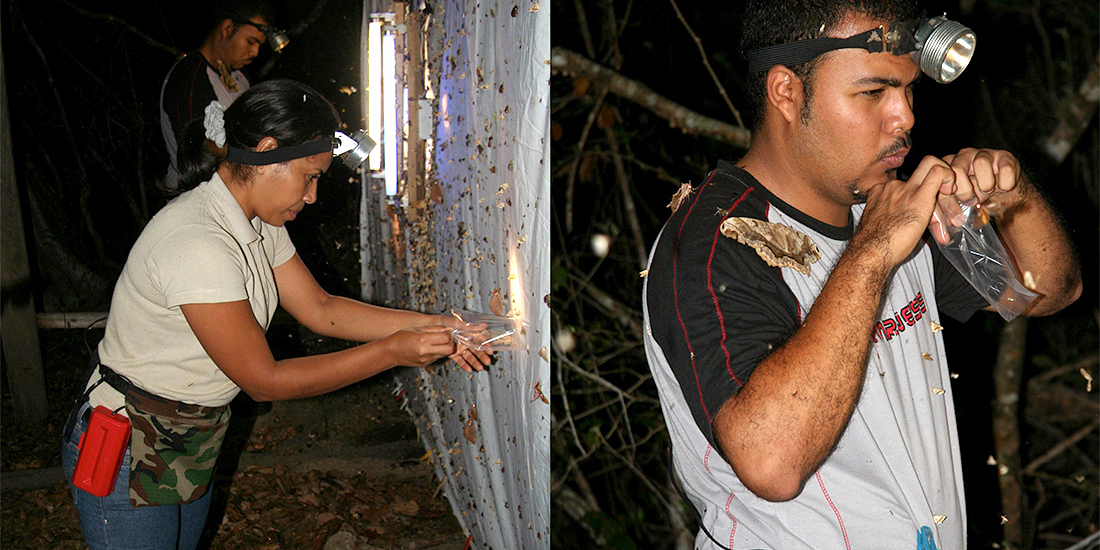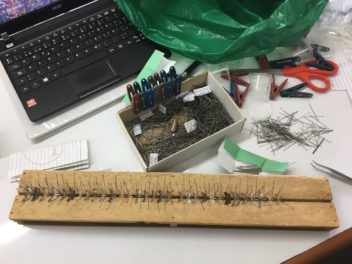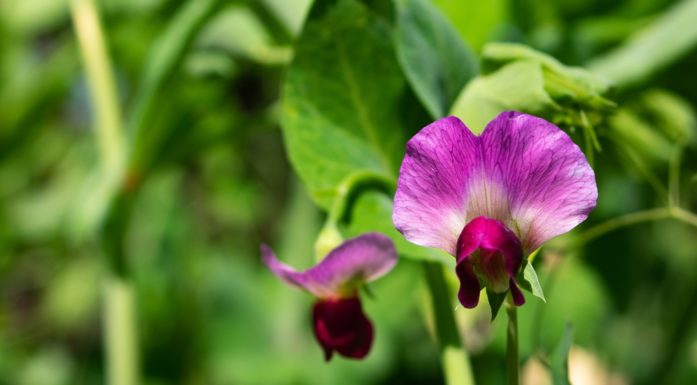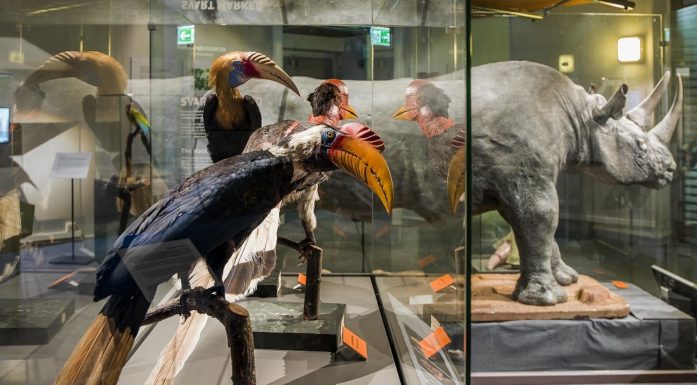Planting the seeds for a bioliterate tropical country
Ecologist Daniel H. Janzen has spent virtually all of his half-century career trying to catalogue and understand the creatures in a patch of dry tropical forest in northwestern Costa Rica. Little did he realize his efforts would evolve into building a sea-to-summit conservation area — and a drive to inventory all million species in the country in partnership with the Costa Rican government.
Ecologist Dan Janzen first made his name studying ants that protect acacias — and acacias that protect and feed those ants.
He and his wife and colleague Winnie Hallwachs have worked with the country of Costa Rica to pioneer a new approach to conserving tropical forest. The result is a thriving 168,000-hectare national park — which Janzen calls a “garden” — that spans interconnected habitats from volcano tops to the sea, including mid-elevation Caribbean rainforest.
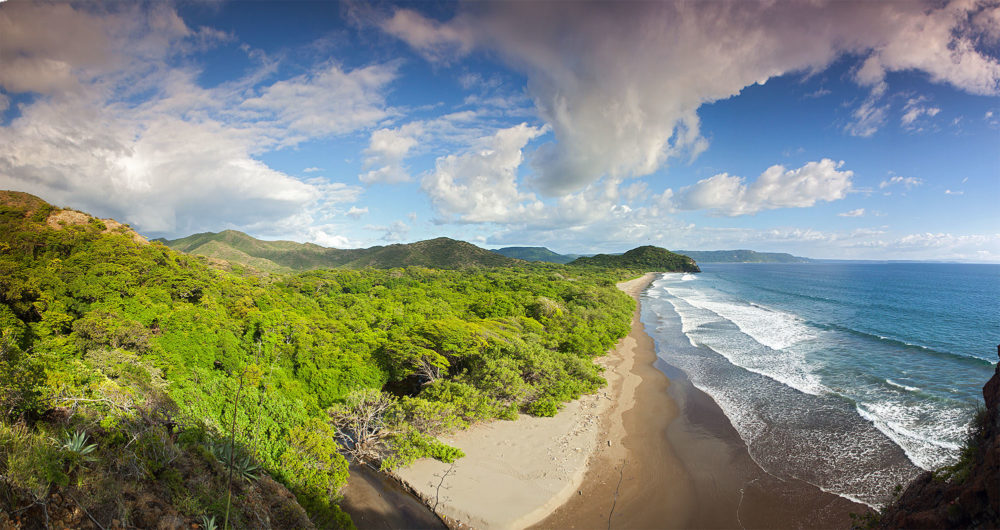
Playa Nancite and the coastal Pacific tropical dry forest in the Guanacaste Conservation Area. This beach is the site of one of the largest nesting events for Olive Ridley sea turtles in the eastern Pacific ocean. Photo: Luciano Capelli
And now, with the help of hundreds of thousands of insect legs, he and his colleagues are on course to catalogue every living creature that inhabits Costa Rica — a country that contains fully 4 per cent of the world’s biodiversity in just 0.01 per cent of the planet’s land area.
“What this boils down to is that (Costa Rica) will be the first tropical country in the world to know what is inside it,” he said last November at the 7th International Barcode of Life Conference.
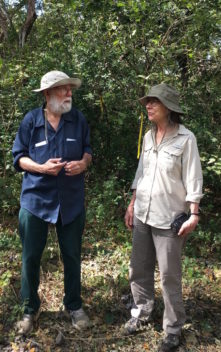
Professor Dan Janzen and his colleague and wife, biologist Winnie Hallwachs, have been working for decades with the Costa Rican government and its people to protect the amazing biodiversity in the dry tropical forests in the Guanacaste Conservation Area. Photo:
Guanacaste Dry Forest Conservation Fund
Torbjørn Ekrem, a professor in the NTNU University Museum’s Department of Natural History, who is also head of the Norwegian Barcode of Life programme, says that Janzen has been an important central player in using and promoting the barcoding system.
“He’s used barcoding not only to document known biological diversity in the tropics, but also to discover cryptic species and their role in the ecosystem,” Ekrem said.
Janzen, who is the DiMaura Professor of Conservation Biology at the University of Pennsylvania, Philadelphia, USA will be in Trondheim to talk about his work at The Big Challenge Science Festival in June. He’ll also be a keynote speaker at the 8th International Barcode of Life Conference, which is being held in Trondheim and overlaps with the science festival.
- You might also like: Mapping life’s barcodes in Norway
Plants that feed ants
Janzen, now 80, got his start in the 1960s as “a highly esoteric ecologist, exploring the incredible diversity of animal-plant interactions in Costa Rica’s dry forest,” he has written. “Conservation was something done by ….‘those other people’. I studied it, they saved it.”
His PhD work involved studying the weird world of Mexican ants and the acacias that they live in — and protect.
A seminal paper in 1966 describes how swollen-horn acacias offer ants a home inside enlarged thorns along their stems, a relationship that coevolved over time. The acacias provide the ants all the food they need to survive, in the form of sweet nectar and structures called Beltian bodies, which the ants use to feed their larvae.
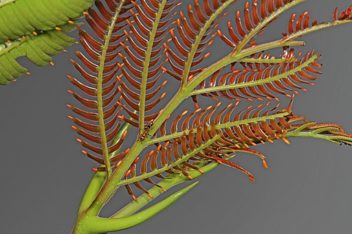
A Bull Thorn Acacia (Vachellia cornigera)) that clearly shows Beltian bodies in Belize. Ants live in the hollowed-out thorns, and attack anything that tries to eat the leaves of the tree. The acacia’s Beltian bodies (the little lumps on the ends of the leaves in this picture) provide protein for the ants. Photo: Judy Gallagher [CC BY 2.0 (https://creativecommons.org/licenses/by/2.0)]
Both are useful to each other — and in doing so, they both thrive.
It’s a model that Janzen would replicate, perhaps unconsciously, on a rather larger scale later in his Costa Rica work, with the Guanacaste Conservation Area.
Seeds need to move — but how?
Janzen would eventually shift his full research focus to Costa Rica. Here he puzzled over why some plants in the lowland forests had such big, heavy seeds, often collecting in heaps under the parent plant with no apparent seed eaters to transport them.
By this time Janzen was working in an area called Santa Rosa National Park, a ragged patchwork of degraded dry tropical forest which would eventually become a part of the much larger Guanacaste Conservation Area that Janzen would have a hand in creating. But more about that later.
To understand why big seeds and no big seed eaters poses such a puzzle, you have to remember that seeds always need a transport mechanism, so they can grow in fertile areas without competing with the adult plant.
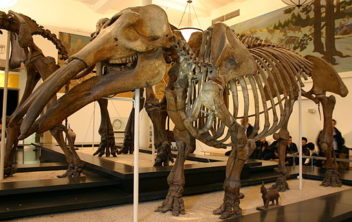
This is all we have left of gomphotheres. The photo shows a skeleton at the American Museum of Natural History in the US. Photo: Ryan Somma [CC BY-SA 2.0 (https://creativecommons.org/licenses/by-sa/2.0)]
But why were some Costa Rican plants, like the large forest palm, producing thousands of egg-sized fruits that might be gobbled up by rodents or predated by boring insects, but that were most definitely not being transported away?
Modern-day biologists might assume the answer was that modern-day farming or hunting had eliminated the modern-day animals big enough to graze on these and other large-seeded fruits.
Janzen, however, realized the forest palm seeds and at least 38 other big heavy seeds were anachronisms — that they had coevolved with a range of big, fruit-eating animals that once roamed North and Central America but disappeared at the end of the last Ice Age, almost certainly hunted to extinction by people.
Finding the wild gomphothere
The seeds only made sense if there were creatures like gomphotheres, giant elephant-like animals most closely related to mastodons, that ate them, Janzen hypothesized.
“The… fruit nutrient content, nut shape and hardness, seed crop size, germination timing, and other reproductive traits are molded and maintained by complex interactions in which the gomphothere, with its huge stomach, massive molars and peripatetic behavior, plays a central role,” he wrote in his paper on the idea.
It’s a fun idea (not least because gomphothere is such a silly name) but could otherwise seem like a bit of ecological trivia, a footnote in the story of the natural history of Costa Rica.
Article continues under photo.
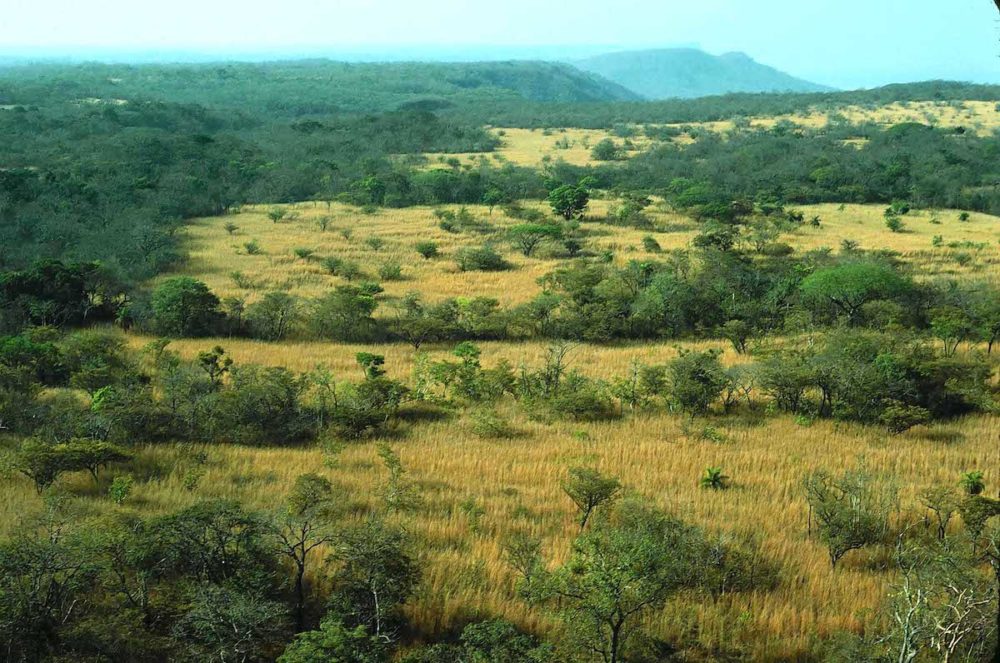
The dry forest “savannah” created by cows and pasture, and the influence of highly flammable jaragua grass, which was imported from Africa to feed the cows. Janzen was able to see beyond the “savannah” and realize that the area really was a forest. The tree in the centre of the photograph is a guanacaste tree, which has given its name to the conservation area. Photo: Daniel Janzen
But the gomphotheres made Janzen think a couple of heretical thoughts: The first was that the dry forest was in fact a forest with big trees, not the open African-like savannah that had actually been created by the Spanish and their cattle starting in the 1600s, and was maintained by constant fires.
Guanacaste Dry Forest Conservation Fund
Founded in spirit in 1985, and formalized in 1997 as the Guanacaste Dry Forest Conservation Fund (GDFCF) with a gift from the Kyoto Prize awarded to Dan Janzen, the fund is a formal non-profit and close working partner to the Costa Rican government's 165,000 hectare Area de Conservacion Guanacaste (ACG) within their national system of protected areas.
The GDFCF raises money to help fund the ACG's parataxonomist programme, acquire land to extend the conservation area and for promoting bioliteracy in local communities.
GDFCF's formal mission statement is to: “Promote the long term survival of the ecosystems and biodiversity of the Área Silvestre Protegido (wild protected area) of Área de Conservación Guanacaste in Costa Rica through conservation, education, science-based management and biodiversity development.”
For more information, go to: https://www.gdfcf.org/
The second, and perhaps even more heretical thought was that the mix of forest and grasslands in a dry tropical forest like Santa Rosa National Park might actually be more “natural” if free-ranging livestock had “moderately and patchily browsed” the area.
That way, these animals could spread big seeds, and do the job of the missing gomphotheres.
Invading gold miners and another Eureka moment
Then, fate stepped in.
An old acquaintance, a Costa Rican park official, asked Janzen and Hallwachs for help. It was 1985 and 1500 gold miners had invaded rainforests in Corcovado National Park, in the southwest part of the country.
The Costa Rica government was on the verge of calling in the military to eject the miners. Janzen allocated a week to go the area to do an “environmental impact study” to see what the mining was doing to the rainforests.
A day onsite confirmed what he expected: “placer and pump gold mining totally trashes a tropical aquatic ecosystem,” he wrote. So for the rest of the week, Janzen talked to the gold miners — and had his “Eureka” moment.
The miners didn’t think they were doing anything wrong because the land wasn’t owned by anyone, at least the way they saw it. Janzen saw that “if the miners were told unambiguously that they were as if illegally parked, and on day X they would get a parking ticket and be towed, they would leave,” he wrote.
And he was right.
Restoring the forests
“The problem with big wilderness areas is that they don’t seem to have an owner or presence,” Janzen wrote of his realization. “People come along and take what they want and do what they like. It’s like having a vacant lot next to your house. You’ll wash your car there and let the kids run all over it. However, if the lot next door has a house and a family, you’ll respect it and keep the kids off the yard.”
The realization spurred Janzen and Hallwachs to write up an “unsolicited strategic plan for the long-term survival of Santa Rosa’s dry forest” in the autumn of 1985.
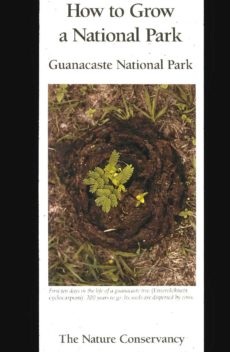
The cover of the first fundraiser handout created for Guancaste National Park, now Guanacaste Conservation Area, or ACG. The photo shows how cows could be modern-day gomphotheres, as a guanacaste seed sprouts from inside a cow pat. Photo: Guanacaste Dry Forest Conservation Fund
The goal was to restore the dry tropical forest using the small remnant forests in Santa Rosa National Park. Janzen and Hallwachs eventually got the blessing of the government and assured officials that the forest restoration would not cost the government money.
The seeds for what is now the Area de Conservacion Guanacaste (AGC), were planted. And Janzen was the gomphothere.
Gardenification of nature
Janzen believes that instead of locking wildlands behind fences in national parks, conserved lands have to find a sustainable way to earn their keep. They have to be integrated into the local society and kept productive. He calls them “anthroecosystems,” adding “a wildland does need to pay its bills in one coinage or another.”
By all measures, the AGC has been wildly successful, if unorthodox. In its earliest days, parts of the park were leased out to cattle ranchers so that as many as 7000 cows could be used as “biotic mowing machines”. The measure was badly needed because the lands had been invaded by a non-native grass that fed major fires. The fires had the potential to eliminate the few fragments of native dry forest that were left.
In 1996, Janzen and park officials arranged for tonnes of orange peels to be dumped in a corner of AGC in exchange for the company donating land to the park. Janzen bet that “at least some of the 235,000 estimated species in the region might enjoy eating the orange peels”, converting this agricultural waste to soil.
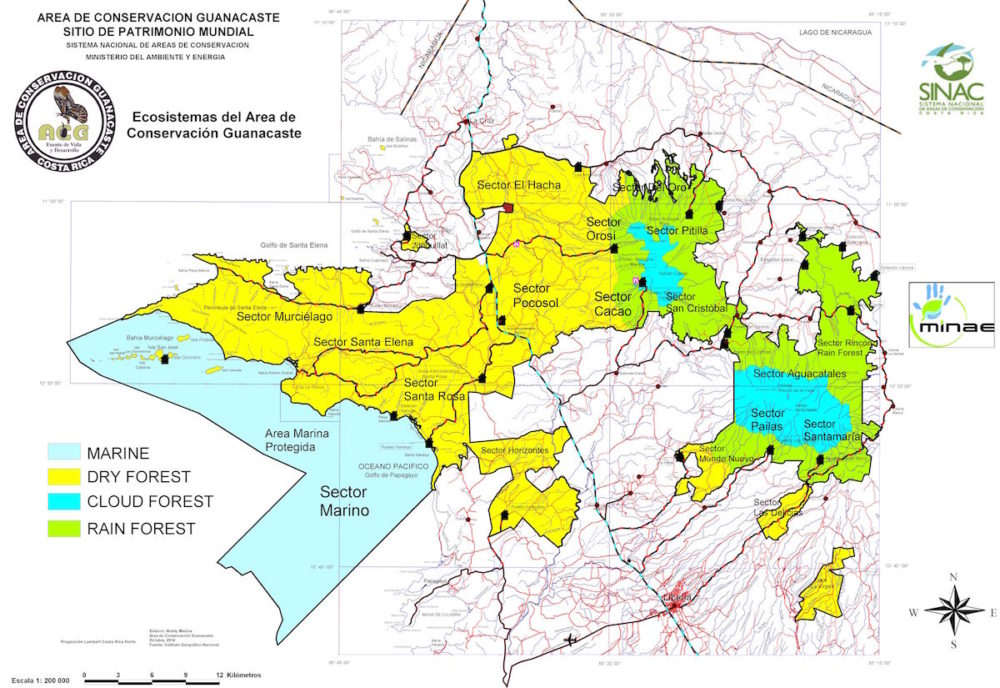
A map of the Guanacaste Conservation Area, showing the range of ecosystems it encompasses. Map: SINAC, Costa Rican National System of Conservation Areas
After six months, the area looked like “a parking lot covered by tar that smells like Cointreau,” he said in a presentation on the effort. After 4 years of monitoring, the result was deep, black soil that no longer had the invasive grass and had the beginnings of forest regeneration.
A longer-term plan to continue the arrangement was thwarted by a court case brought by a rival of the company that had been invited to dump the peels.
Janzen likes to point out that the useful crops from the “gardenification” of the ACG are not what you might expect. In a presentation to the Long Now Foundation in 2005, Janzen showed the group a photograph of a tourist, sweating in the sun while photographing a big brown ball clustered around a stick.
“What is this photograph of?” he asked the audience. “This is a person who is happy to spend $500 a day to stand in the hot sun to take a picture of a termite nest.” In other words, a very valuable — if unconventional — crop.
Ecotourism in Costa Rica, he explains, is “worth more than the coffee crop, the banana crop and cattle crop combined — and Costa Rica is the number two banana producer in the world.”
Insect legs, barcodes of life and parataxonomists
The ACG has also made a point of hiring local residents for everything from fire control to a new type of biological technician that Janzen calls “parataxonomists”.
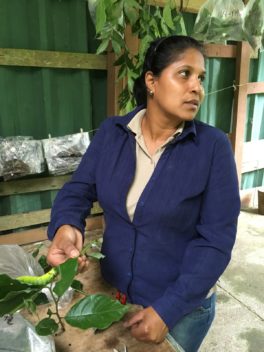
Parataxonomist Gloria Sihezar Araya with a large sphingid caterpillar. Photo: Eric Palola, Guanacaste Dry Forest Conservation Fund
The parataxonomists, now numbering around 40, search for wild caterpillars, rear them until they are butterflies and moths, and document the caterpillars and the plants they eat. The ACG is home to an estimated 15,000 caterpillars, of which about 9,000 have been inventoried.
Starting in 2003, the parataxonomists started taking samples — typically a leg — from specimens that have already collected or that are newly trapped and catalogued in the ACG.
These samples are sent to Canada, to Paul Hebert at the Centre for Biodiversity Genomics at the University of Guelph. Hebert pioneered the idea of barcoding species using a specific area of mitochondrial DNA, using a barcode that is made up of 4 letters and is 650 letters long.
Hebert was able to use DNA barcoding to identify 10 different species out of a collection of virtually identical Costa Rican butterflies that Janzen sent him.
Since 2016, the bioinventorying-parataxonomist-DNA barcoding approach has been used in the coastal marine sector of ACG, with two marine parataxonomists recruited from the local fishing village of Cuajiniquil, and in partnership with the University of Costa Rica. Here, staffers have collected 4,761 specimens, representing 768 species, of which 316 are new records for ACG, and 67 are new records for Costa Rica. Another 42 species are believed to be new and undescribed species.
In more practical terms, the collaboration between Hebert and Janzen, on behalf of the ACG, has been so fruitful that Janzen was able to use the barcode results to monitor the environmental impact of a geothermal drilling site, as one example.
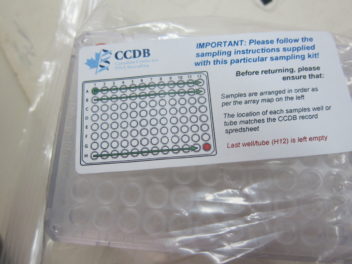
An unopened package used for samples to be sent to Paul Hebert’s lab at the University of Guelph for DNA barcoding. Photo: Nancy Bazilchuk
Janzen found that the insects collected around the perimeter of the drilling site — identified using DNA barcoding — could help scientists monitor potential or actual damage. The success led the Costa Rican government to decide to try to barcode every species in the country, in an effort called “Bioalfa”, which translates to Bioliteracy.
A race against extinction
NTNU’s Ekrem says if the Bioalfa project succeeds, it would be “an enormous achievement. Costa Rica would be the first tropical country to know the genetic signatures of all its species — and they have roughly 1 million species in that little country.”
In spite of Janzen’s successes, Ekrem points out that the Bioalfa project still faces major challenges. Some, such as money, can be solved with enough time and fundraising work. Janzen and Hallwachs have established the Guanacaste Dry Forest Conservation Fund, which supports the parataxonomist and provides money for forest acquisition and management (see fact box).
Then there’s the issue of finding and collecting all the creatures, and then describing them so they can be classified under the Linnaean classification system, which has its roots in an approach developed by the Swedish botanist Carolus Linnaeus in the 1700s.
Ekrem says it’s a big job to sort, sample and preserve them for long-term storage.
“Keeping vouchers for DNA barcodes is of outmost importance and needs dedicated natural history collections. The Costa Rican barcode library of life will be the ultimate reference point for monitoring environmental change, because relying on morphological descriptions alone, we risk losing our biodiversity before we know about it,” he said.
To date, scientists have taken 260 years to describe roughly 1.8 million species worldwide out of an estimated 10 million, Ekrem said.
Knowing what we have is a challenge for which time is of the essence, he said.
“We have to work faster or species will die out before we even know they are there. DNA barcoding is technology that makes this possible,” he said.
References:
Neotropical Anachronisms: The Fruits the Gomphotheres Ate. Daniel Janzen and Paul S. Martin. Feb. 1982 Science 215 (4528): 19-27. DOI: 10.1126/science.215.4528.19
Coevolution of Mutualism Between Ants and Acacias in Central America. Daniel H. Janzen. Evolution, Vol. 20, No. 3 (Sept. 1966),249-275
Ten species in one: DNA barcoding reveals cryptic species in the neotropical skipper butterfly Astraptes fulgerator.
